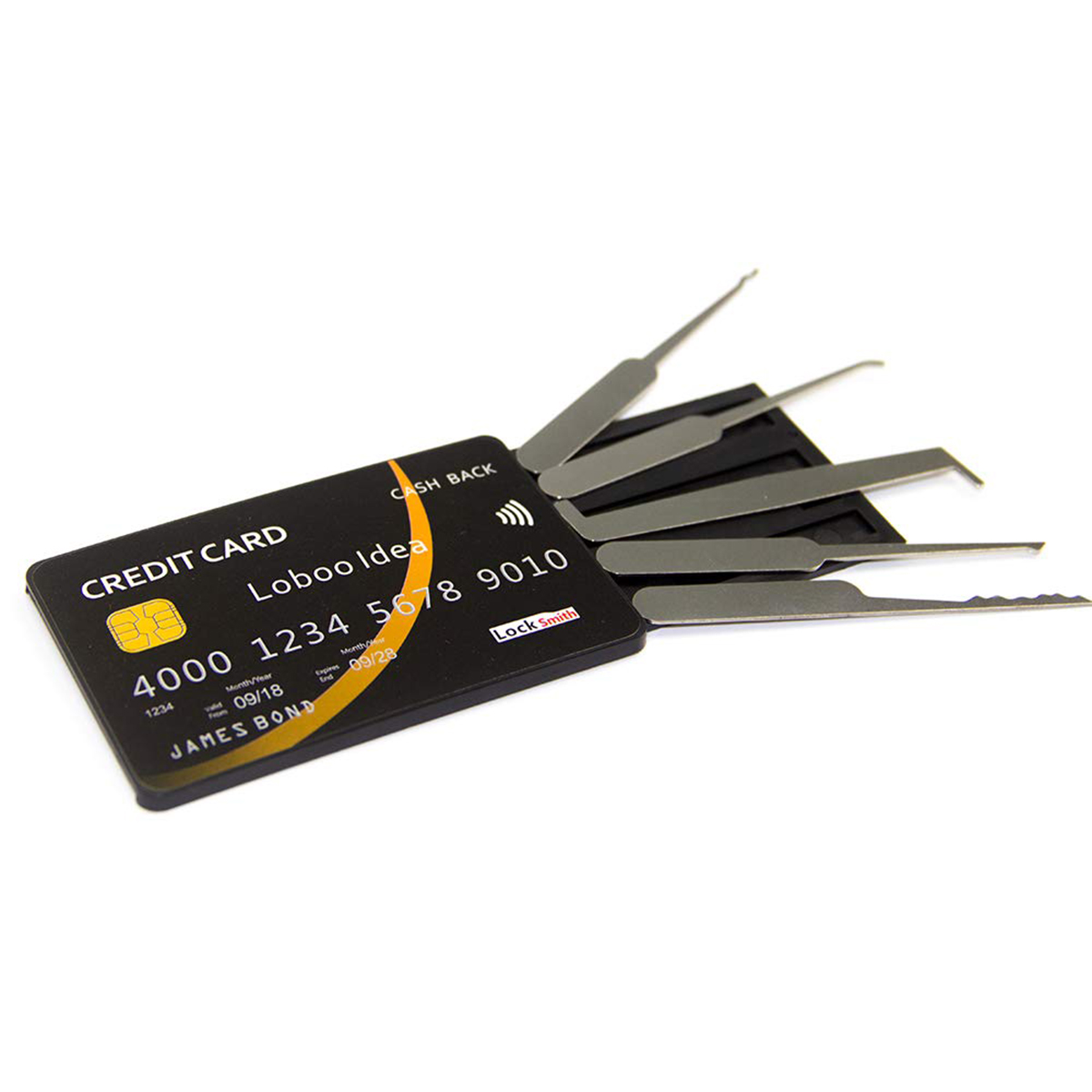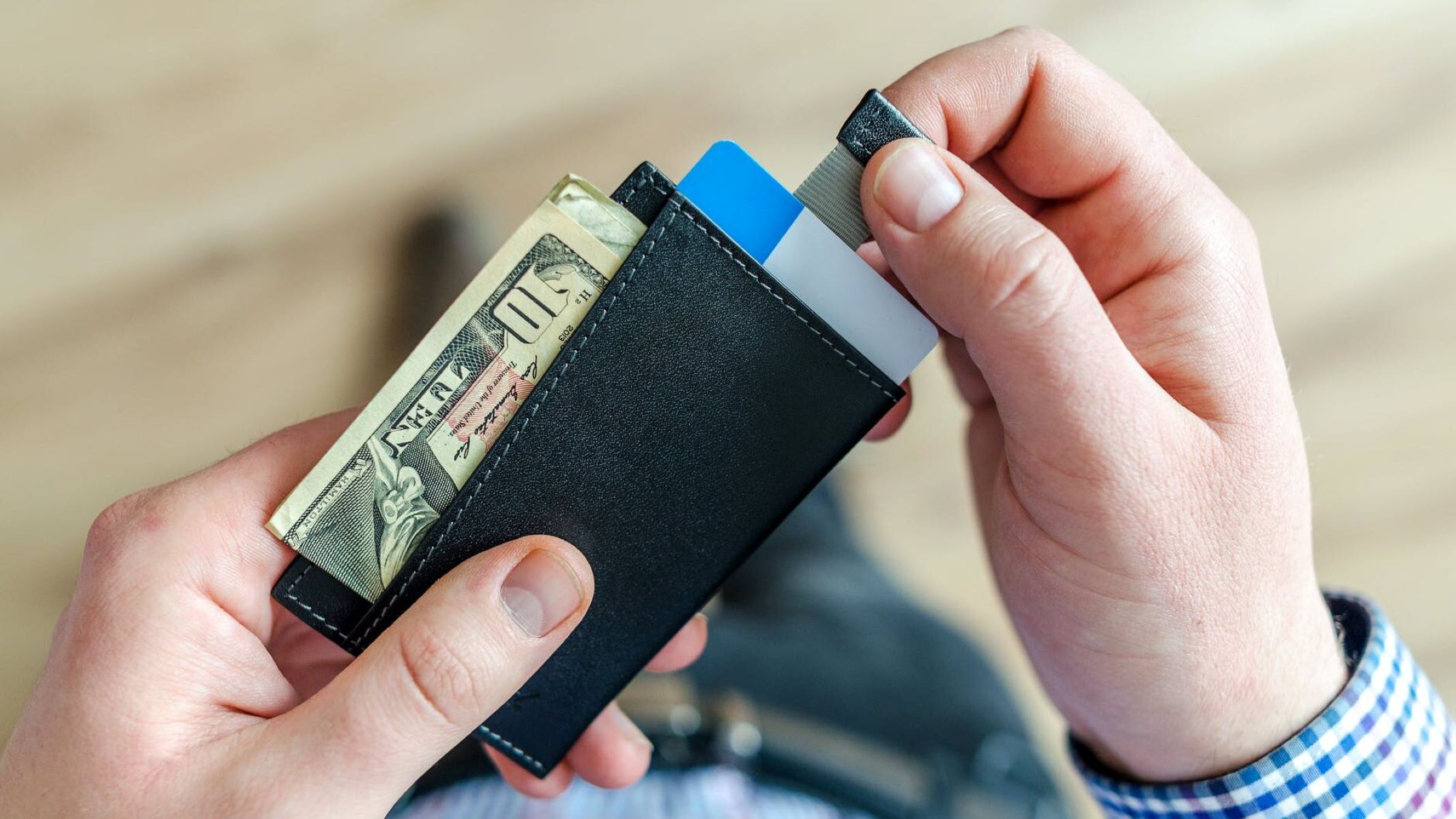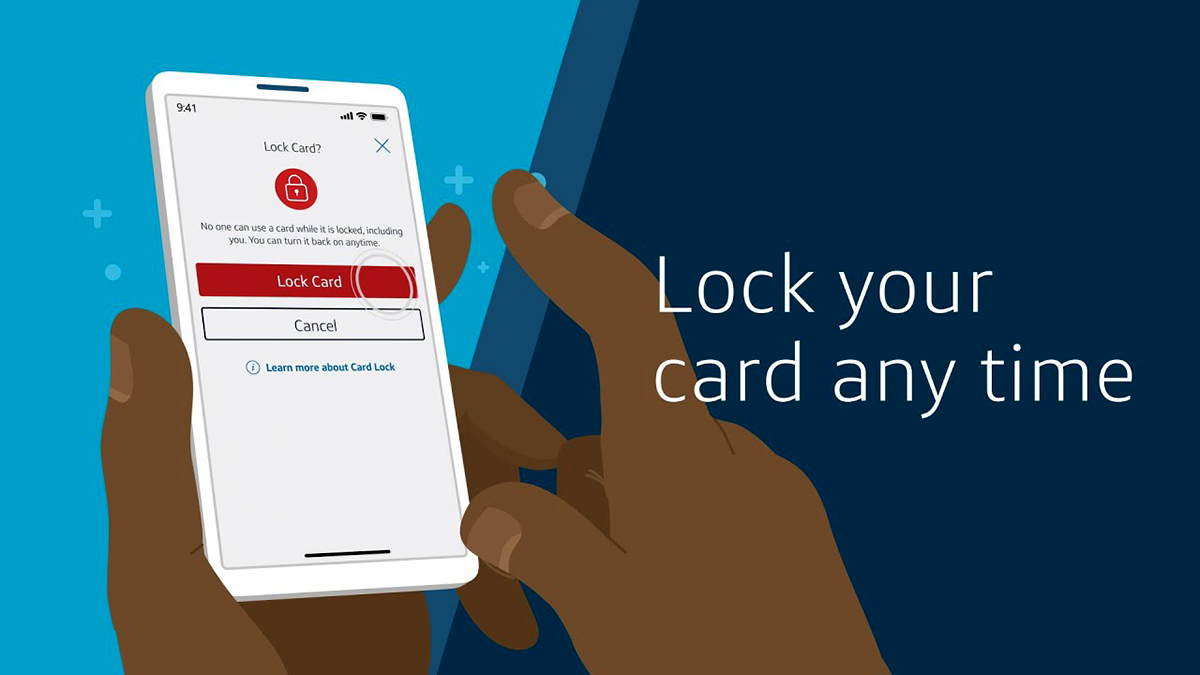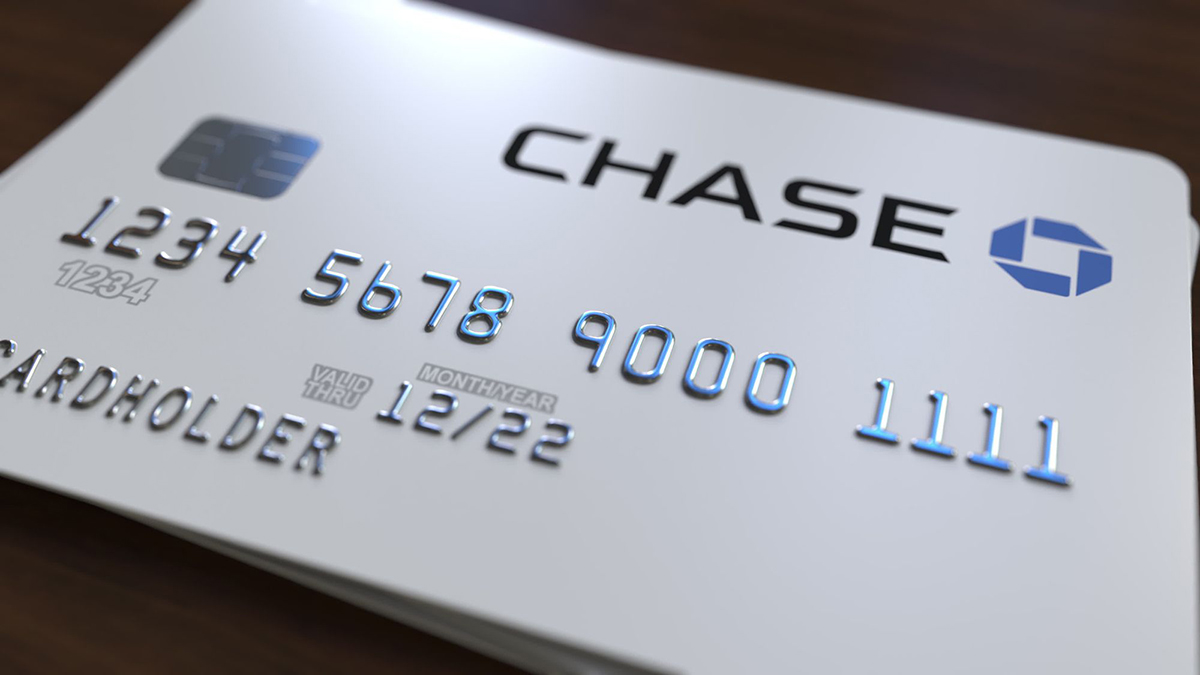

Finance
How To Pick Lock With Credit Card
Published: November 11, 2023
Learn the art of picking locks with a credit card and take control of your finances with this comprehensive guide. Master the technique and secure your financial future.
(Many of the links in this article redirect to a specific reviewed product. Your purchase of these products through affiliate links helps to generate commission for LiveWell, at no extra cost. Learn more)
Table of Contents
Introduction
Welcome to the fascinating and slightly unconventional world of lock picking! Have you ever found yourself locked out of your home or office, desperately wishing you had a spare key or a locksmith on speed dial? Well, the good news is that with a little ingenuity and know-how, you can potentially pick a lock using a tool readily available in your wallet – your credit card.
Now, before we dive into the intricacies of lock picking with a credit card, it is important to clarify the legality of this practice. In some jurisdictions, picking locks with any tool, including a credit card, without proper authorization is considered illegal and can lead to legal consequences. Therefore, it is crucial to familiarize yourself with the laws in your area before attempting any lock picking activities.
That being said, if it is legal and you find yourself in a lockout situation, knowing how to pick a lock with a credit card can be a valuable skill to have. However, it’s important to note that not all locks can be successfully manipulated in this manner. Different types of locks require different techniques, and even with the right technique, it may not always be possible to pick a lock using a credit card.
Before we delve into the step-by-step guide on lock picking with a credit card, let’s take a moment to discuss some precautions that need to be taken. First and foremost, ensure that you are attempting to pick a lock on property that you own or have legal permission to access. Additionally, remember that lock picking, even with a credit card, can potentially damage the lock or the card itself, so proceed with caution and be prepared for potential risks.
Now that we have covered the legal and safety aspects, let’s explore the fascinating world of lock picking with a credit card. It’s time to put your ingenuity to the test and learn how to manipulate certain types of locks using this everyday tool.
Is it legal to pick locks with a credit card?
Lock picking with a credit card falls into a legal gray area. The legality of lock picking largely depends on the jurisdiction you are in and the circumstances surrounding the lock you are attempting to pick. In many places, lock picking without proper authorization is considered illegal and can result in criminal charges for trespassing or breaking and entering.
It’s important to note that picking a lock with a credit card can be seen as a form of forced entry, even if it doesn’t involve the use of traditional lock picking tools. While credit cards are not designed for lock picking, their slim and flexible nature can potentially be manipulated to disengage certain types of locks. However, it’s essential to understand that using a credit card to unlock a door without permission is likely to be viewed as unlawful entry.
Lock picking laws vary from country to country and even within different states or regions. Some jurisdictions have specific laws that prohibit the possession or use of lock picking tools, regardless of the intent. Even if using a credit card for lock picking is not explicitly addressed, it is still advisable to exercise caution and seek legal advice before attempting such techniques.
It’s worth noting that there are lawful exemptions to lock picking, such as individuals who are licensed locksmiths or are authorized by the owner to access the locked property. If you find yourself in a lockout situation, it’s best to consult a professional locksmith who can legally and safely assist you.
Remember, the legality of lock picking activities can vary significantly depending on the circumstances and your jurisdiction. It’s crucial to respect the laws in your area and obtain proper authorization before attempting any lock picking techniques, even if it involves using a seemingly innocuous tool like a credit card.
Types of locks that can be picked with a credit card
While picking locks with a credit card might seem like something you’d only see in movies, it is indeed possible to manipulate certain types of locks using this everyday item. However, it’s important to note that not all locks can be easily picked with a credit card, as the effectiveness of this method depends on the lock’s design and security features.
The most common types of locks that can potentially be manipulated with a credit card are spring bolt locks and latch bolt locks. These types of locks typically have a spring-loaded mechanism that keeps the door locked, and when the card is inserted between the door and the frame, it can potentially push back the latch or bolt to disengage the lock.
Spring bolt locks, also known as rim locks or deadlatches, are commonly found in residential properties. They have a spring-loaded bolt that extends into the door frame when the door is closed, keeping it securely shut. The bolt can be retracted using a key or, in some cases, by inserting a credit card between the door and the frame, exerting pressure to push back the bolt and unlock the door.
Latch bolt locks, such as knob locks or lever handle locks, operate similarly to spring bolt locks but with a latch rather than a bolt. These locks are typically found in both residential and commercial settings. By using a credit card to manipulate the latch mechanism, you may be able to retract the latch and gain access without a key.
It’s worth mentioning that the success of picking a lock with a credit card depends on various factors, including the quality of the lock, the level of security, and the technique used. More advanced locks, such as deadbolt locks or electronic locks, are generally not susceptible to credit card lock picking methods.
Additionally, it’s essential to consider the condition of the credit card itself. A worn-out or flexible card may not provide enough rigidity and strength to effectively manipulate the lock mechanism. It’s recommended to use an expired card or one that you no longer need to avoid damaging your active credit cards.
While it may be intriguing to learn about the types of locks that can potentially be picked with a credit card, it’s essential to remember the legal implications and potential risks involved. Always seek proper authorization and, if in doubt, consult a professional locksmith for assistance.
Precautions before attempting to pick a lock with a credit card
Before embarking on any lock picking endeavor, it’s important to take certain precautions to ensure your safety and minimize the risk of damaging the lock or your credit card. Lock picking, even with a credit card, requires finesse and precision, so keep the following precautions in mind:
1. Legal Considerations: Make sure you have legal permission to attempt to pick the lock. Picking a lock without authorization can be illegal and lead to serious consequences. Always ensure you are picking a lock on your own property or have the owner’s permission.
2. Evaluate the Lock: Assess the type of lock you are attempting to pick with a credit card. As mentioned earlier, certain types of locks, such as deadbolts or electronic locks, are more secure and not easily susceptible to credit card lock picking methods.
3. Use an Expired Card: To avoid any potential damage to your active credit cards, use an expired card or one that you no longer need. The process of picking a lock may damage or bend the card, rendering it unusable for future transactions.
4. Prepare the Card: If the credit card is too flexible or worn, it may not provide enough rigidity to successfully manipulate the lock mechanism. Consider reinforcing the card’s stiffness by wrapping it in tape or using a stronger and sturdier alternative, such as a plastic ID card.
5. Proceed with Caution: Take your time and proceed patiently. Apply gentle and controlled pressure when attempting to push back the latch or bolt. Trying to force the card or using excessive pressure can lead to card breakage or damage to the lock.
6. Have a Backup Plan: Lock picking is not always a foolproof method, and there’s no guarantee that you’ll succeed in unlocking the door with a credit card. Always have a backup plan in case your attempts are unsuccessful. This could involve contacting a professional locksmith for assistance or seeking an alternative method of entry.
7. Practice Ethical Lock Picking: Lock picking should be done responsibly and ethically. Avoid using your newfound skills for any malicious purposes or attempting to pick locks that do not belong to you without explicit permission.
Remember, lock picking with a credit card should only be considered as a last resort and only in situations where you have legal authority to do so. If you are unsure or uncomfortable attempting lock picking, it is always best to seek the services of a professional locksmith who can assist you legally and safely.
Step-by-step guide on how to pick a lock with a credit card
Disclaimer: Before attempting this method, please ensure that you have legal authorization to pick the lock. Lock picking without proper permission can be illegal and lead to legal consequences.
If you find yourself in a lockout situation and have exhausted other options, here is a step-by-step guide on how to potentially pick a lock using a credit card:
- Assess the lock: Determine if the lock you are attempting to pick is a spring bolt lock or a latch bolt lock. These types of locks are more susceptible to credit card lock picking methods.
- Select an expired credit card: Choose a credit card that you no longer use or one that has expired. Avoid using active credit cards to prevent damage.
Remember, lock picking with a credit card should only be done as a last resort and in situations where you have the legal authority to attempt it. It’s essential to respect the laws in your area and seek proper authorization before engaging in lock picking activities.
Alternative methods for lock picking
While lock picking with a credit card can be a handy skill to possess in certain situations, it’s important to acknowledge that this method may not be effective for all locks. Fortunately, there are alternative techniques and tools available for lock picking. Here are a few alternative methods you can consider:
- Lock Picking Tools: Invest in a set of professional lock picking tools. These specialized tools, such as lock picks and tension wrenches, are designed to manipulate the lock mechanism effectively. Learning how to use these tools properly requires practice and skill, but they offer a higher success rate than credit card lock picking.
Each alternative method requires practice, skill, and in-depth knowledge of lock mechanisms. It’s essential to emphasize that attempting these techniques without proper authorization or legal permission is illegal. Always ensure you have proper authorization or consult a professional locksmith when faced with a lockout situation.
Remember, lock picking should only be done in a lawful and ethical manner. Use these alternative methods responsibly or seek professional assistance when necessary.
Conclusion
Lock picking with a credit card can be a useful skill to have in certain circumstances, but it’s important to exercise caution and respect legal boundaries. Before attempting any lock picking activities, ensure that you have legal authorization to do so and familiarize yourself with the laws in your jurisdiction.
While credit cards can be manipulated to pick certain types of locks, it’s crucial to remember that not all locks are susceptible to this method. Spring bolt locks and latch bolt locks are generally more vulnerable to credit card lock picking, but higher-security locks may require alternative techniques or professional assistance.
Before attempting to pick a lock with a credit card, take precautions such as using an expired card, reinforcing the card’s rigidity, and proceeding with patience and care. Recognize that lock picking can potentially damage the lock or the card itself, so it’s important to be prepared for potential risks and have a backup plan in case your attempts are unsuccessful.
It’s worth noting that there are alternative lock picking methods available, such as using professional lock picking tools, bump keys, raking, and impressioning. These methods often require more skill and practice but may offer higher success rates compared to credit card lock picking.
If you are not confident in your abilities or you want to ensure a legal and safe approach, it is always advisable to seek the assistance of a professional locksmith. Locksmiths have the necessary expertise, tools, and legal authorization to handle lockouts and security issues.
Remember that lock picking should only be done responsibly and ethically, with proper authorization and adherence to the laws in your area. Whether you choose to explore lock picking with a credit card or opt for alternative methods, always prioritize safety and legality.
In summary, lock picking with a credit card can be a valuable skill in emergency situations, but it’s crucial to understand the legal implications and limitations. Use this knowledge responsibly, always seek proper authorization, and consider professional assistance when needed. Stay informed, stay safe, and be mindful of the ethical considerations associated with lock picking.














